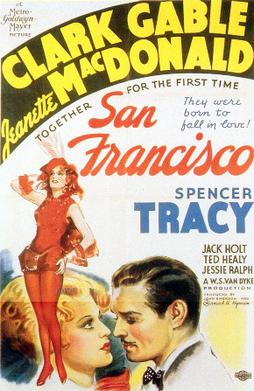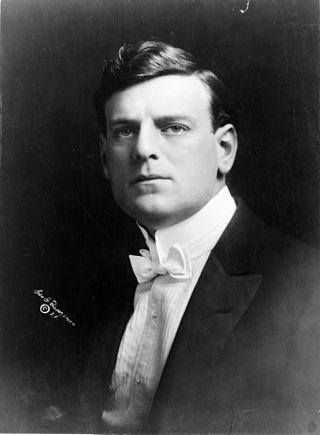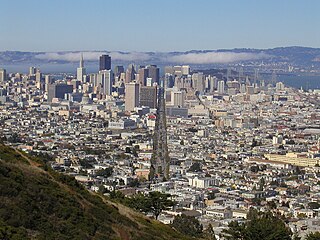Sources
- Jacobs, Lewis. 1967. The Rise of the American Film: Experimental Cinema in America, 1921-1947. Teachers College Press, Columbia University, New York. Library of Congress Catalog Number: 68-25845
The Miles Brothers (Harry J., Herbert, Joseph, and Earl C.) were pioneers in American cinema. In 1902, they established the first motion picture exchanges in the United States. [1]
The Miles Brothers’ Exchange, established by Harry and Herbert Miles, proved to be “one of the most important and profitable developments in motion picture history” according to film historian Lewis Jacobs. [2]
Prior to the exchange system, each exhibitor purchased films directly from the filmmakers - a substantial investment. The Miles brothers, who neither made nor showed filmed, bought up films and rented these to exhibitors at one-fourth the purchase price. [3] Lewis writes:
Such a plan was heartily welcomed everywhere. The exchange man could continue to rent out films long after they had more than paid for themselves; his profits were large. Manufacturers now had one large customer who practically guaranteed to buy most of their output at higher prices; and they enjoyed an increased market for pictures because exhibitors, paying less for them, could more frequently change their programs… [4]
Lewis adds that the variety of program offerings, in turn, stimulated attendance, raising profits for exhibitors. [5] Widely adopted, the exchange system introduced by the Miles Brothers led to rivals for the lucrative trade. By 1907, there were over a hundred exchanges operating in major cities throughout the United States. [6]
Their 1906 film, A Trip Down Market Street , is an historic 13-minute journey down Market Street in San Francisco from 8th Street to the Embarcadero, giving a rare view of the street before the 1906 San Francisco earthquake. [7] The film was long thought to have been made in September 1905, after being dated as such by the Library of Congress based on the state of construction of several buildings.
Film historian David Kiehn, a co-founder of Niles Film Museum in Niles, California, a museum devoted to Essanay Studios, dated the film to the spring of 1906 from automobile registrations and weather records. [8] Kiehn eventually found promotional materials from the film's original release. The film was sent to New York City by train the night before the earthquake, which destroyed the Miles Brothers' studio where it had been kept. Three prints survive as of 2010 [update] , and it has been digitally restored. [9]

San Francisco is a 1936 American musical-drama disaster film directed by W. S. Van Dyke, based on the April 18, 1906 San Francisco earthquake. The film stars Clark Gable, Jeanette MacDonald and Spencer Tracy. MacDonald's singing helped make this film a major hit, coming on the heels of her other 1936 blockbuster, Rose Marie.

The nickelodeon was the first type of indoor exhibition space dedicated to showing projected motion pictures in the United States and Canada. Usually set up in converted storefronts, these small, simple theaters charged five cents for admission and flourished from about 1905 to 1915.

The Essanay Film Manufacturing Company was an early American motion picture studio. The studio was founded in 1907 in Chicago, and later developed an additional film lot in Niles Canyon, California. Its various stars included Francis X. Bushman, Gloria Swanson and studio co-owner, actor and director, Broncho Billy Anderson. It is probably best known today for its series of Charlie Chaplin comedies from 1915-1916. In late 1916, it merged distribution with other studios and stopped issuing films in the fall of 1918. According to film historian Steve Massa, Essanay is one of the important early studios, with comedies as a particular strength. Its founders, George Kirke Spoor and Anderson, were subsequently awarded special Academy Awards for pioneering contributions to film.

The 1989 Loma Prieta earthquake occurred on California's Central Coast on October 17 at 5:04 p.m. local time. The shock was centered in The Forest of Nisene Marks State Park in Santa Cruz County, approximately 10 mi (16 km) northeast of Santa Cruz on a section of the San Andreas Fault System and was named for the nearby Loma Prieta Peak in the Santa Cruz Mountains. With an Mw magnitude of 6.9 and a maximum Modified Mercalli intensity of IX (Violent), the shock was responsible for 63 deaths and 3,757 injuries. The Loma Prieta segment of the San Andreas Fault System had been relatively inactive since the 1906 San Francisco earthquake until two moderate foreshocks occurred in June 1988 and again in August 1989.

Haight-Ashbury is a district of San Francisco, California, named for the intersection of Haight and Ashbury streets. It is also called The Haight and The Upper Haight. The neighborhood is known as one of the main centers of the counterculture of the 1960s.

Gilbert M. "Broncho Billy" Anderson was an American actor, writer, film director, and film producer, who was the first star of the Western film genre. He was a founder and star for Essanay studios. In 1958, he received a special Academy Award for being a pioneer of the film industry.

Sidney Patrick Grauman was an American showman who established two of Hollywood's most recognizable and visited landmarks, the Chinese Theatre and the Egyptian Theatre.

Actuality film is a non-fiction film genre that uses footage of real events, places, and things, in a similar way to documentary film. Unlike documentaries, actuality films are not structured into a larger narrative or coherent whole. In practice, actuality films preceded the emergence of the documentary. During the era of early cinema, actualities—usually lasting no more than a minute or two and usually assembled together into a program by an exhibitor—were just as popular and prominent as their fictional counterparts. The line between "fact" and "fiction" was not as prominent in early cinema as it would become once documentaries became the predominant non-fiction filmmaking form. Actuality as a film genre is related to still photography.

The Market Street Railway Company was a commercial streetcar and bus operator in San Francisco. The company was named after the famous Market Street of that city, which formed the core of its transportation network. Over the years, the company was also known as the Market Street Railroad Company, the Market Street Cable Railway Company and the United Railroads of San Francisco. Once the largest transit operator in the city, the company folded in 1944 and its assets and services were acquired by the city-owned San Francisco Municipal Railway. Many of the former routes continue to exist into the 2020s, but served by buses.

Market Street is a major thoroughfare in San Francisco, California. It begins at The Embarcadero in front of the Ferry Building at the northeastern edge of the city and runs southwest through downtown, passing the Civic Center and the Castro District, to the intersection with Portola Drive in the Twin Peaks neighborhood. Beyond this point, the roadway continues into the southwestern quadrant of San Francisco. Portola Drive extends south to the intersection of St. Francis Boulevard and Sloat Boulevard, where it continues as Junipero Serra Boulevard.
The San Francisco and San Mateo Electric Railway (SF&SM) was the first electric streetcar company in San Francisco, California. The company was only in business for ten years, starting from 1892 until it was merged into the United Railroads of San Francisco (URR) in 1902.

Pathé Exchange, commonly known as Pathé, was an American film production and distribution company, largely of Hollywood's silent era. Known for its trailblazing newsreel and wide array of shorts, it grew out of the American division of the major French studio Pathé Frères, which began distributing films in the United States in 1904. Ten years later, it produced the enormously successful The Perils of Pauline, a twenty-episode serial that came to define the genre. The American operation was incorporated as Pathé Exchange toward the end of 1914 and spun off as an independent entity in 1921; the Merrill Lynch investment firm acquired a controlling stake. The following year, it released Robert J. Flaherty's groundbreaking documentary Nanook of the North. Other notable feature releases included the controversial drama Sex (1920) and director/producer Cecil B. DeMille's box-office-topping biblical epic The King of Kings (1927/28). During much of the 1920s, Pathé distributed the shorts of comedy pioneers Hal Roach and Mack Sennett and innovative animator Paul Terry. For Roach and then his own production company, acclaimed comedian Harold Lloyd starred in many feature and short releases from Pathé and the closely linked Associated Exhibitors, including the 1925 smash hit The Freshman.

At 05:12 Pacific Standard Time on Wednesday, April 18, 1906, the coast of Northern California was struck by a major earthquake with an estimated moment magnitude of 7.9 and a maximum Mercalli intensity of XI (Extreme). High-intensity shaking was felt from Eureka on the North Coast to the Salinas Valley, an agricultural region to the south of the San Francisco Bay Area. Devastating fires soon broke out in San Francisco and lasted for several days. More than 3,000 people died, and over 80% of the city was destroyed. The event is remembered as the deadliest earthquake in the history of the United States. The death toll remains the greatest loss of life from a natural disaster in California's history and high on the lists of American disasters.
In the Name of the Law is a 1922 American silent melodrama directed by Emory Johnson. FBO released the film in August 1922. The film's "All-Star" cast included Ralph Lewis, Johnnie Walker, and Claire McDowell. The cast also included Johnson and his wife, Ella Hall. Emilie Johnson, Johnson's mother, wrote both the story and screenplay. In The Name of the Law was the first picture in Johnson's eight-picture contract with FBO.

The Niles Essanay Silent Film Museum is located in what is now the Niles district in the city of Fremont, California. The museum is housed in the Edison Theater building, a century-old Nickelodeon movie theater, just half a block from the former site of the Niles Essanay Studios where Broncho Billy and Charlie Chaplin made films in the 1910s. It is dedicated to preserving and showing silent films and their history.

A Trip Down Market Street is a 1906 phantom ride film of a cable car as it travels down Market Street in San Francisco. It is notable for capturing the city four days before the 1906 San Francisco earthquake. The film shows details of daily life in a major early 20th-century American city, including the transportation, fashions and architecture of the era. The film begins at 8th Street and continues eastward to the cable car turntable, at the Embarcadero, in front of the Ferry Building.
Shreve & Company is an established retailer of jewelry, from timepieces to diamonds, headquartered in San Francisco, California. Incorporated in 1894 by George Rodman and Albert J. Lewis, it is considered the oldest commercial establishment in San Francisco. Shreve & Co has had a tumultuous history, ranging from Chapter 11 bankruptcy in 1992 to most recently losing their lease to Harry Winston.
Lionel Mark Jacobs was an American businessman and politician. Moving to Arizona Territory with his brother in 1867 to open a mercantile business, his business interests expanded into financial services and he was a co-founder of Tucson's first bank. Politically he was a member of the Arizona Territorial Legislature and served as territorial treasurer.

California Motion Picture Corporation was a film company based in San Rafael, California, in Marin County during the silent film era. The company lasted from 1914 until January 1916 when it went bankrupt. It was subsequently renamed and lasted until 1920. It produced at least 15 films. The film company is known for its feature-length films about early California history. Alex E. Beyfuss managed the company.